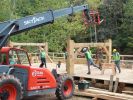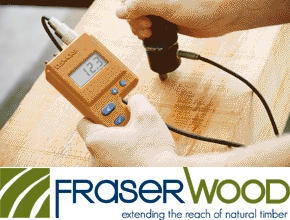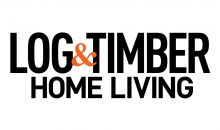Day 7, Sunrise Mill CBW (October 4, 2019)
The day of raising dawned cool and bright. The crew assembled on the sash mill deck for Dale's raising orientation. Dale reviewed the raising plan outline and addressed the specific safety issues raisings present and covered the raising guidelines for the volunteers. As is almost always the case (Pemberton is the exception), the number of volunteers needed to raise safely is usually a good deal fewer than the number needed to fabricate the frame. This made for an easy day for most of the volunteers, as they rotated from the gallery to the deck, from observing to participating.

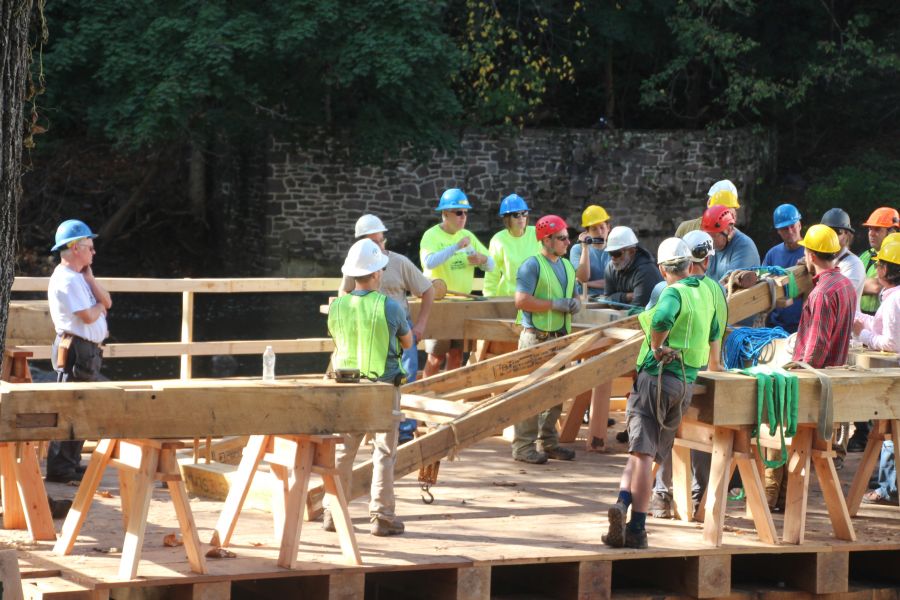
We raise Bent 1.
The raising of Bent 1 continues.
Raising of Bent 1 complete:
A side view of the raised Bent 1:
While the raising commenced, Rene Allen began carving the year and the TFG logo into the top of a stream-side down brace to memorialize when and by whom the frame was raised.
With the shear leg moved into position and the second bent being staged for its raising (left), another group of volunteers assembles the third bent, following direction from instructor Will Beemer. In the photo on the right below, Benjamin Sutfin, with his back to you, is driving the post onto the tie tenon.
The second bent is set to be raised by hand with the shear leg. Neil reviews the process with those who will be supplying the lifting power.
We had a little trouble with one of our ropes and decided we would switch to raising a little earlier than planned to assure the safety of participants and materials. That's Dale doing a skip as the bent drops into place. Our operator, Trevor, proved to be an effective and sober telehandler operator. The raising went very smoothly.
Trevor at work.
Here's our host and client, Ella, with a bit of a jaunty look. She's appropriately attired in her hard hat and safety vest and enjoying the raising - the high point of the week for her, Alana, and Scott.
After lunch, we started by raising the rafter plates. The stream side wall receives siding, therefore the studs are also fitted to the sill and rafter plate and require a little more time to seat the plate (below).
The obligatory commander was needed here and there to convince a recalcitrant timber to assume its proper location.
The land-side wall does not have the studs, so raising the 20' plate on this side was more easily accomplished.
Bent 3 being raised, below. The bents were quite modest both in height and complexity, so raising them was somewhat less dramatic than many structures we raise at workshops. Nevertheless, it is always the highlight of the week for the participants to see the plan and timbers come together so seamlessly.
Of course, raising requires many fewer participants than fabrication, so some folks, like Alana Blumenthal, Michael Cuba (looking a bit fierce today, eh?), and Ed Sabir enjoyed the warm sun and the drama unfolding.
Our next move was to install the sash which holds the reciprocating saw. This frame is believed to be the original sash installed when the mill was built, circa 1770. Almost all the components are there, and it will take little effort or materials to complete.
The sash now sits on new timber header and joists we installed.
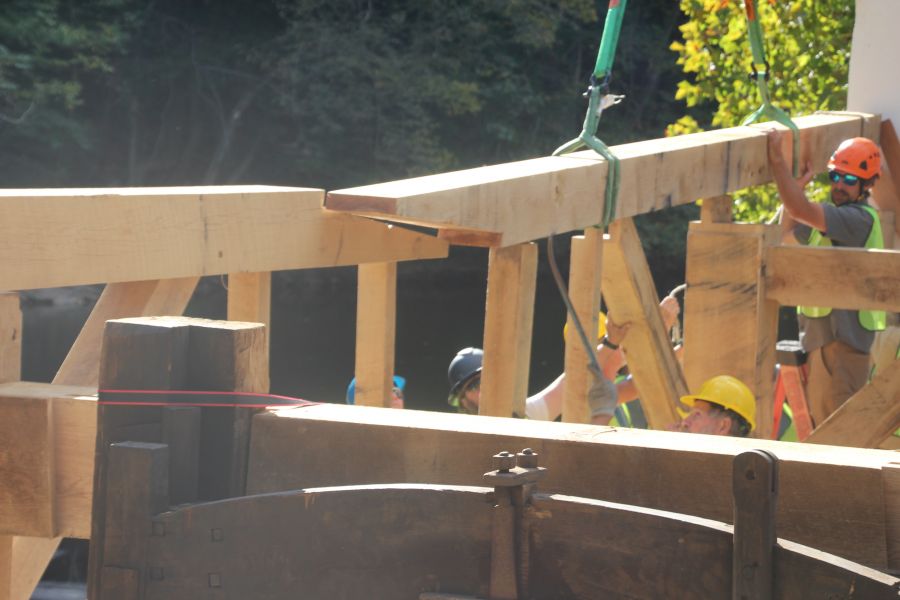
One of the only joints on this frame that required any adjustment during the raising. Neil is paring the tenon to allow it to be inserted into the rafter plate.
Land-side rafter plate (sans studs) being guided into place by Seth and participants.
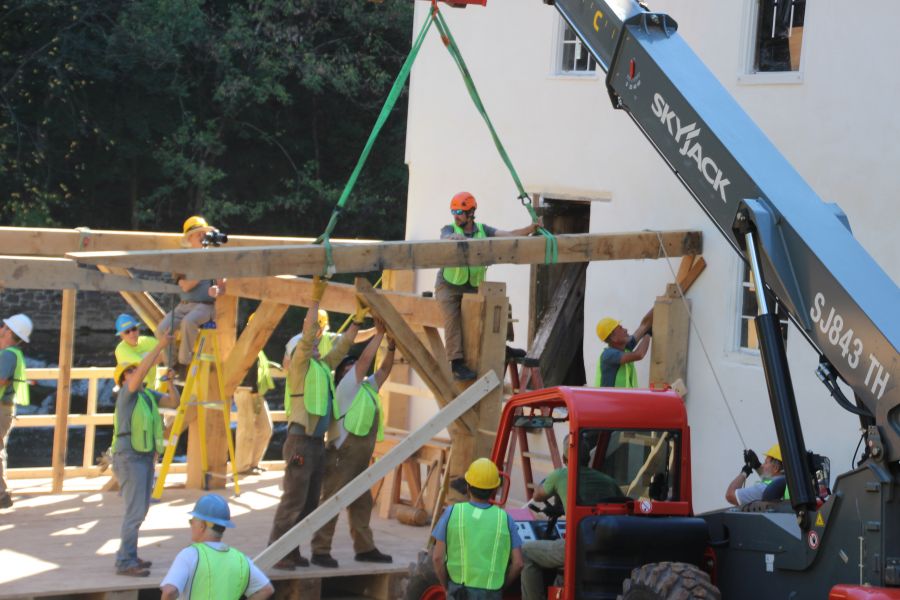

Dale and Brian with the last pair of rafters, about to peg them together - just awaiting the screws to be set at the tails.
And, Will Beemer, expressing his elation at the completion. (Except the tuning - but that's for tomorrow.
Dale Emde, workshop manager, congratulating participants and thanking them for a great day raising safely.

Below, a happy crew, assembled and smiling. The flag on the left is the Montgomery County, Pennsylvania, flag, and on the right, the 48-star flag of yesteryear. (Photo courtesy Daniel Girard)
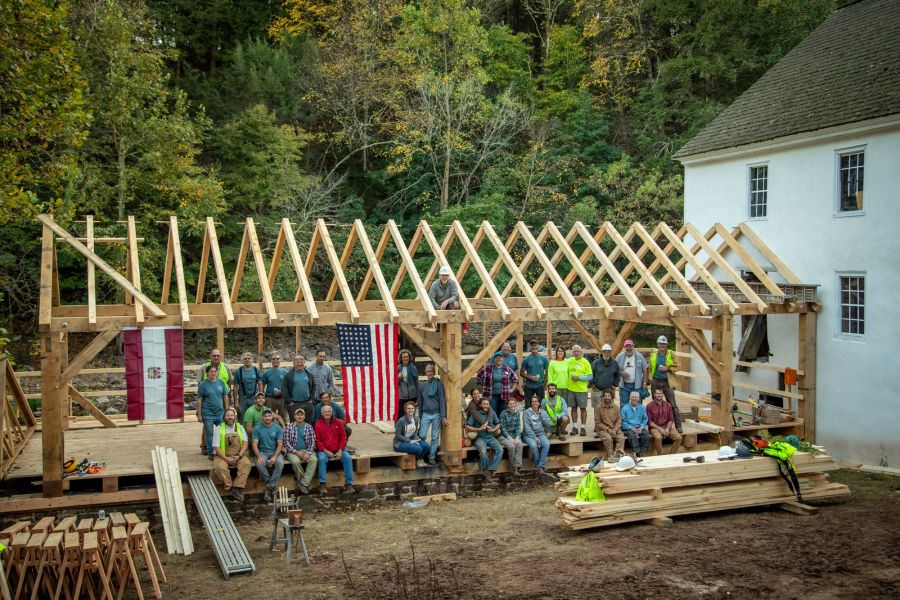
Finally, the completed carving by Rene Allen, on the upturned face of a down brace, noting the year of the raising and the builder of the frame.
This was one for the ages. The whole crew, instructors, volunteers, and our clients will long remember this day and the workshop experience. They will likely forget the specifics of the frame, the hard work, the really hot days, the freezing cold nights, but they won't forget the good friends they made, the shared experience, and the sense of satisfaction derived from working together towards this uncommon end.
Thank you to all who supported the Sunrise Mill Community Building Workshop.
Visit our sponsors and support the folks who support the Guild and our wonderful Community Building Workshops Program
Click on a photo to enlarge.
This blog article has been viewed 294 times.
Posted
Oct 8, 2019 6:40 PM PST.
Edited on Oct 24, 2019 3:50 PM.report
New Blog Posts
- Hidden Trace Farm CBW: Arrival
247 views - Heartwood 2020: Timber Framing II
223 views - Heartwood 2020: Timber Framing Intensive, July 9
95 views - Heartwood 2020: Timber Framing Intensive, July 10
203 views - Heartwood 2020: Timber Framing Intensive, July 7
68 views - Heartwood 2020: Timber Framing Intensive, July 8
95 views - Ekvn-Yefolecv Roundhouse CBW, Day 4 (November 4, 2019)
349 views - Ekvn-Yefolecv Roundhouse CBW, Days 2 & 3 (November 2&3, 2019)
227 views - Before the Build, Ekvn-Yefolecv Roundhouse CBW (October 31, 2019)
200 views - Ekvn-Yefolecv Roundhouse CBW, Day 1 (November 1, 2019)
280 views - After the Sunrise Build: Thank You from the Guild
146 views - Day 7, Sunrise Mill CBW (October 4, 2019)
294 views - Day 6, Sunrise Mill CBW (October 3, 2019)
190 views - Day 5, Sunrise Mill CBW (October 2, 2019)
186 views - Day 4, Sunrise Mill CBW (October 1, 2019)
150 views - Day 3, Sunrise Mill, September 30, 2019
184 views - Day 1, Sunrise Mill, September 28, 2019
204 views - Day 2, Sunrise Mill, September 29, 2019
182 views - Su Casa - Summer 2019
53 views - The Work Goes On: Day Two at Lake Roesiger
Lake Roesiger Community Building Workshop continues, with "more of the same"...
256 views - Orientation, Organization, Layout, and Fabrication: Day One at Lake Roesiger
Day One of the Lake Roesiger Community Building Workshops in Snohomish...
204 views - The Stage is Set: Lake Roesiger Community Building Project
"Day Zero" at the Lake Roesiger Community Building Workshop (Snohomish County,...
170 views - Guild Member reflections on the Notre Dame Fire
Notre Dame Fire Reflections
172 views - 3rd Timber Framers Gathering of Australia in the Grampians, VIC 27/28th October 2018
135 views - Weekly Guild Note -31 August 2018
Complex Roof Workshop to be offered at the Eastern Conference. North...
100 views - Review of Timber Innovation Act and 2018 Farm Bill
170 views - Unforgettable: Timber Framers Guild Western Conference
104 views - Your TFG Dashboard Tutorial
44 views - View from Here, Scantlings Issue 214, April 2018
53 views - 2018 TFEC Code of Standard Practice released
166 views - RFQ for Project Manager for 2018 TFG Community Building Projects
Timber Framing, Project managers
84 views - Thank you Ellen and Rick!
84 views - Everyday Craft
56 views - TFG collaboration with Kennebec Valley Community College
157 views - Brand Camp Re-Cap
42 views - Build Your Brand, Build Your Circle, Build Your Influence - Part One
108 views - Let’s Talk About Search Engines and SEO
88 views
Recent Comments
- Guild Member reflections on the Notre Dame Fire
Notre Dame Fire Reflections
1 comment 172 views
Apr 30, 2019 2:00 PM - TFG collaboration with Kennebec Valley Community College
1 comment 157 views
Mar 21, 2018 4:03 PM - Review of Timber Innovation Act and 2018 Farm Bill
1 comment 170 views
Aug 10, 2018 6:27 PM - Everyday Craft
1 comment 56 views
Mar 3, 2018 9:41 AM


.JPG)

.JPG)

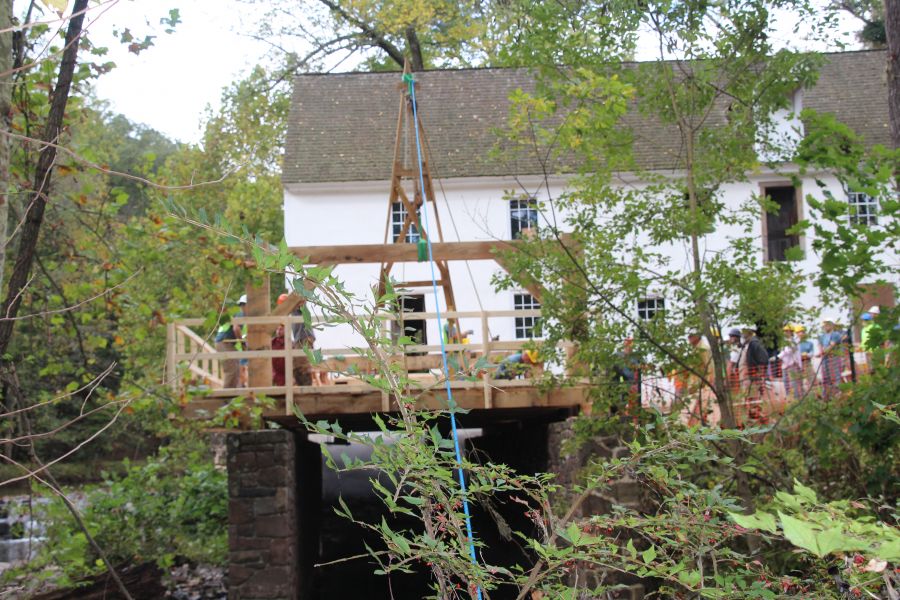








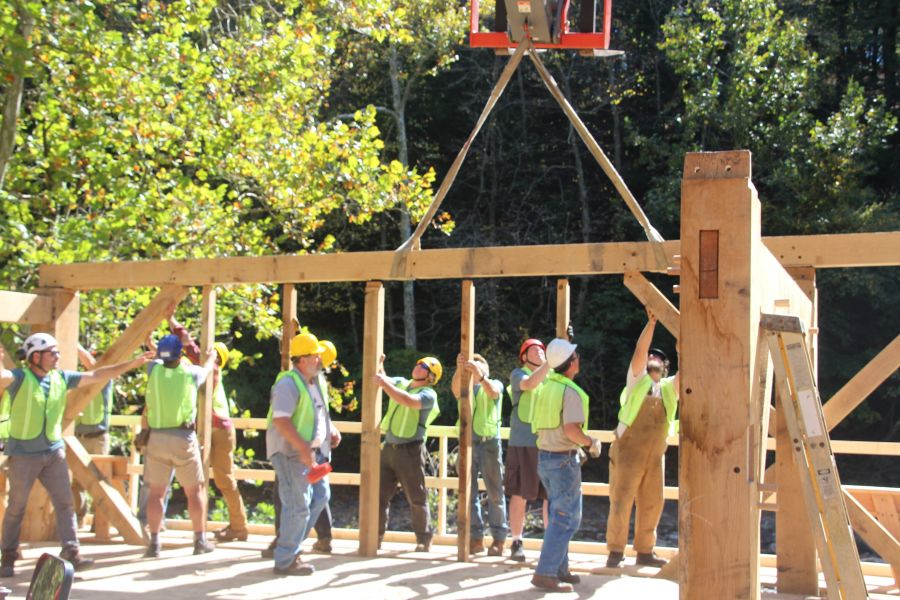


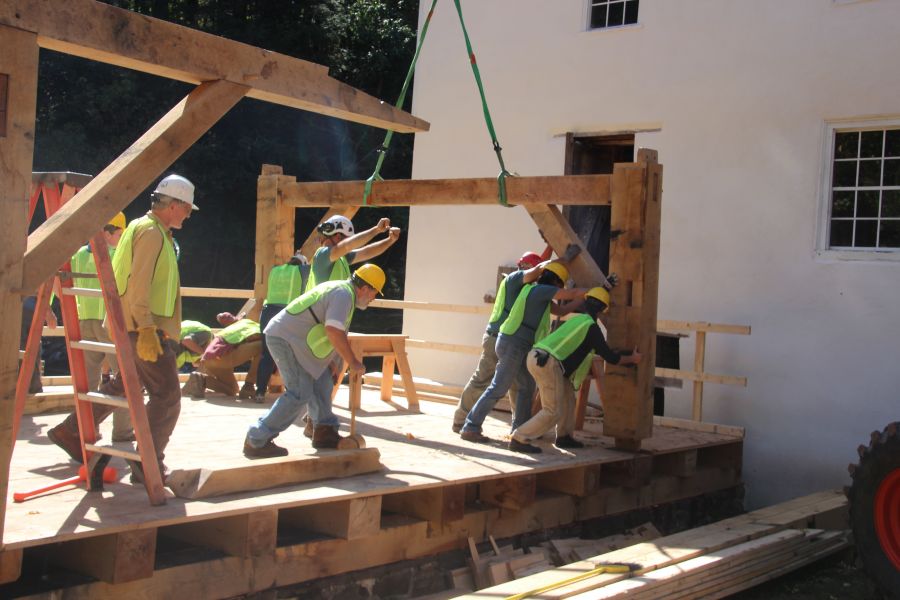
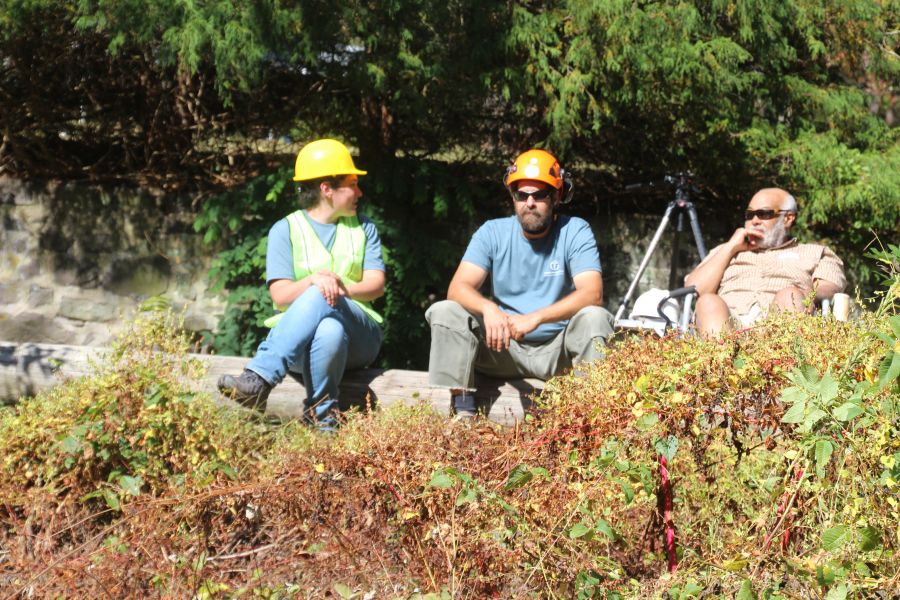
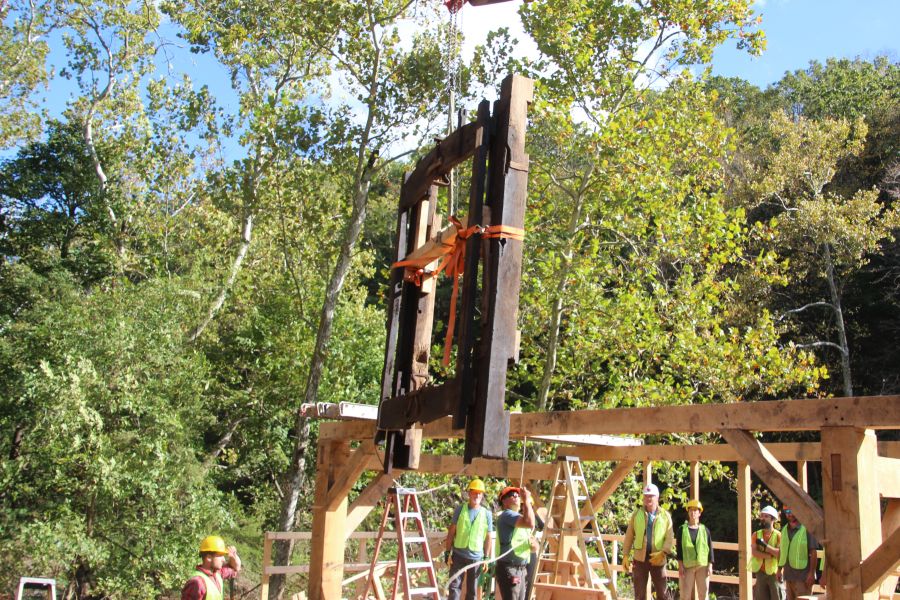
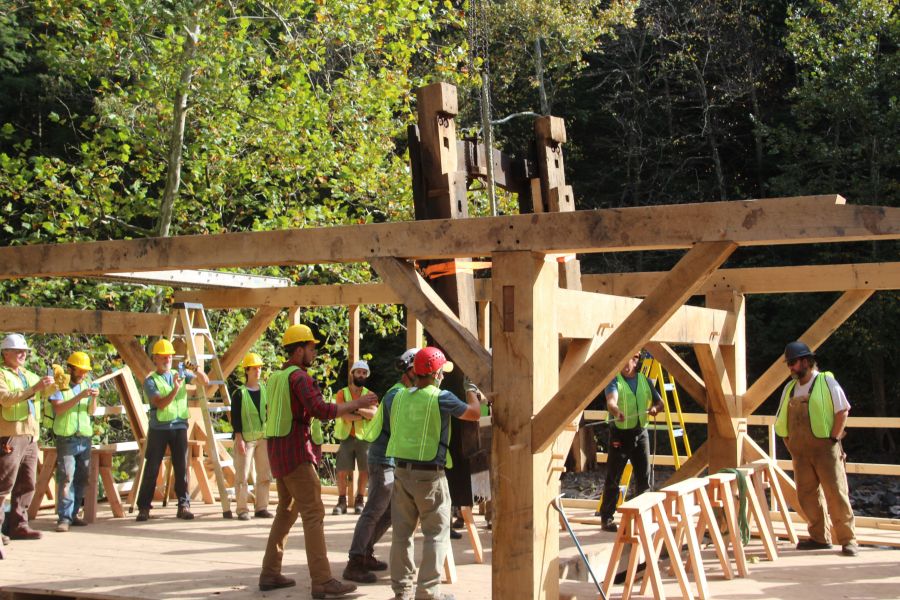



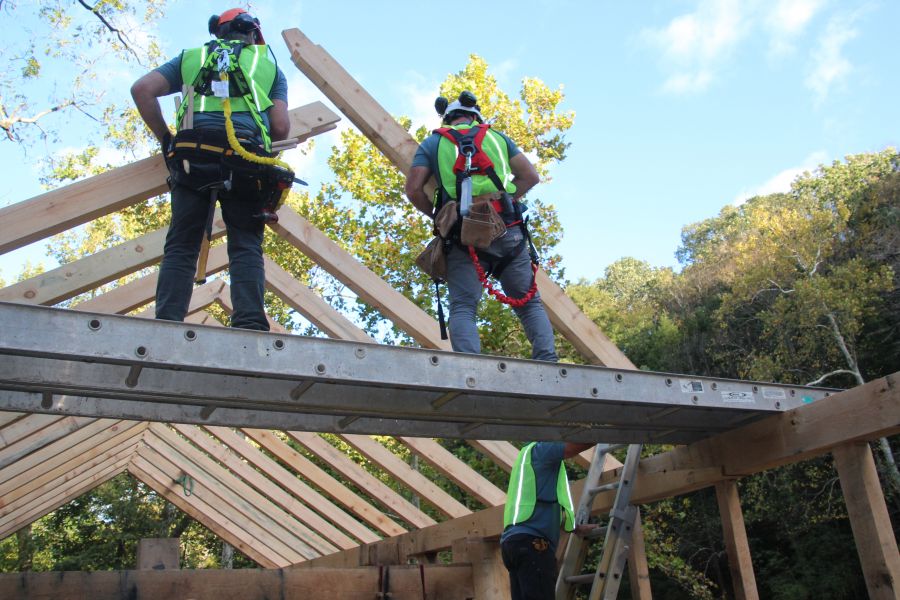
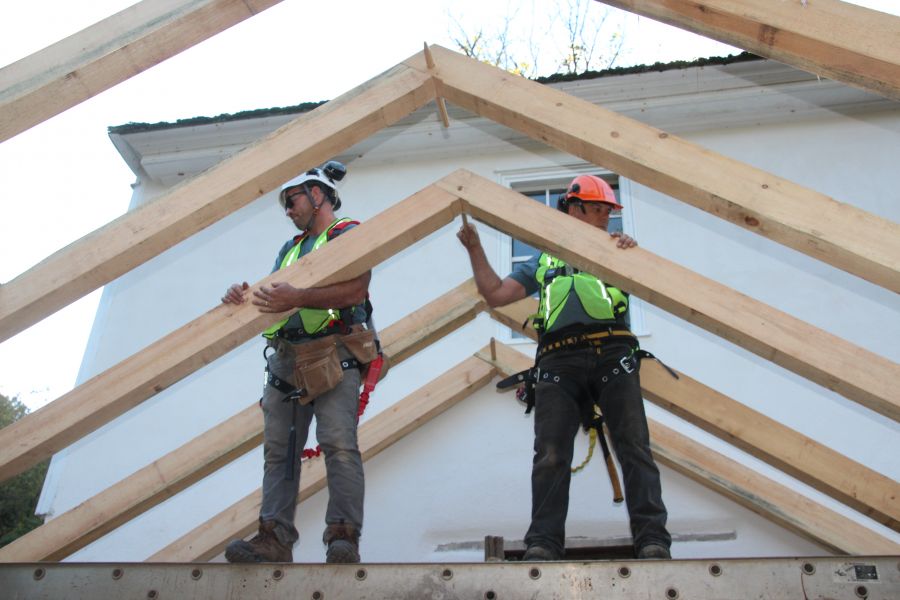
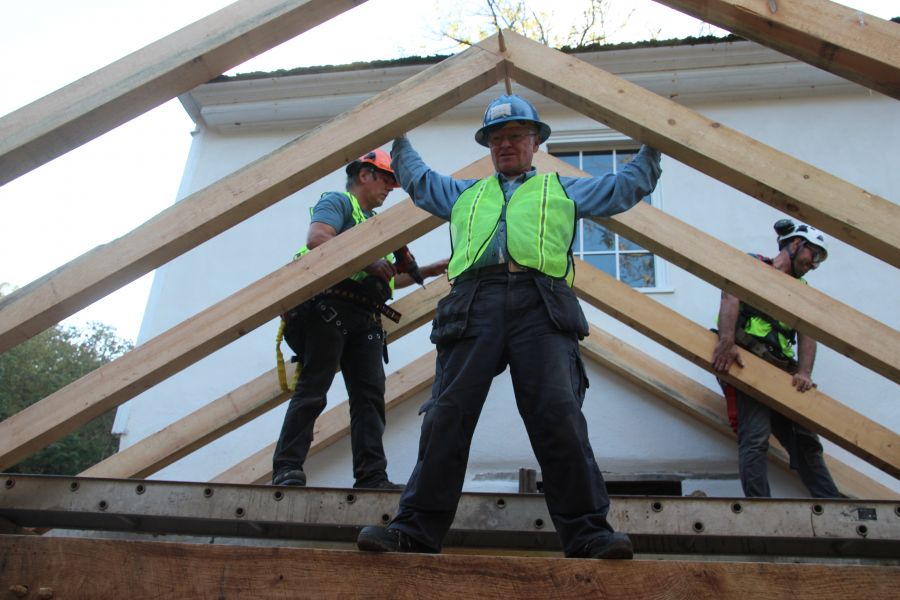
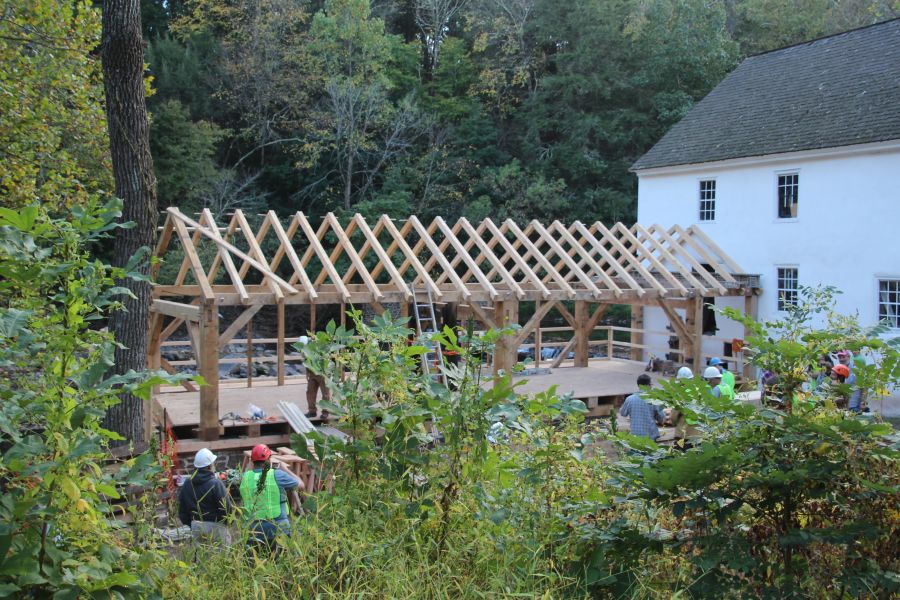

.png)
.jpg)

.jpg)
.png)
.png)
.jpg)
